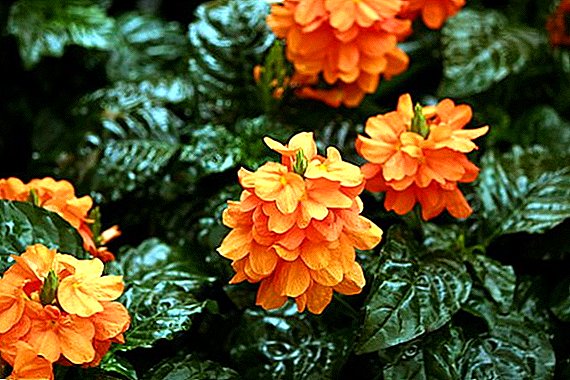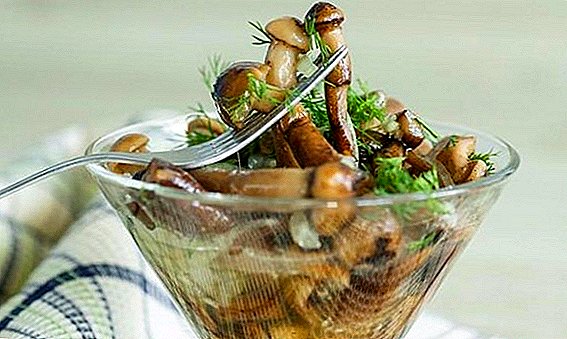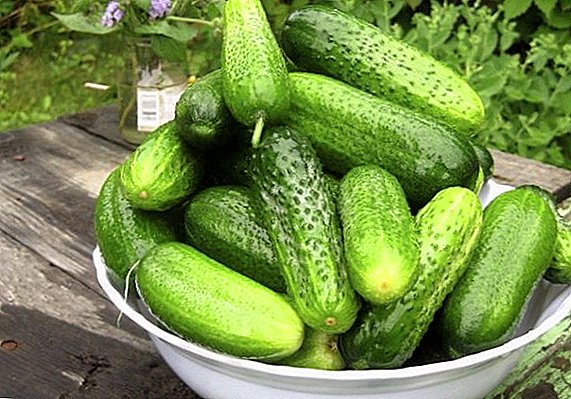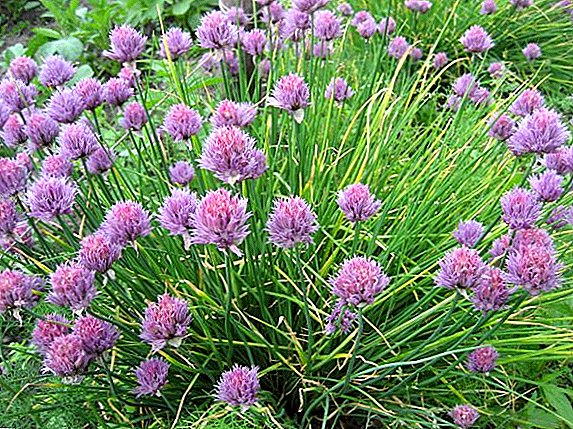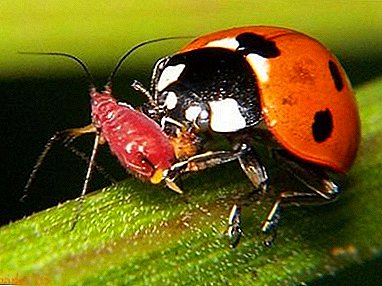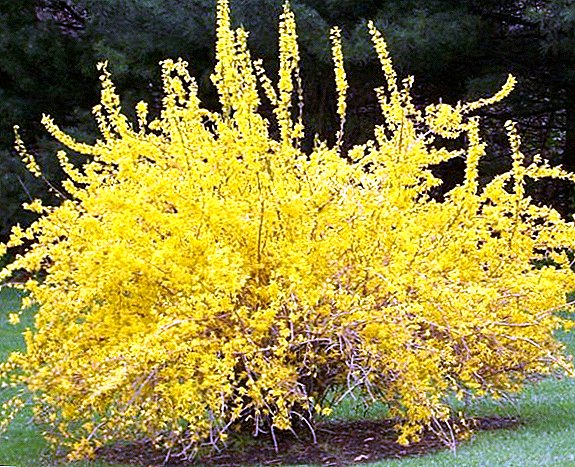 Ornamental plants have long become part of the dacha landscape. They not only decorate the site, but often serve as a cover for any unsightly places. But, unfortunately, not all plants are suitable for colder climates. Today we will find out what are the ornamental shrubs that are not afraid of the climate near Moscow.
Ornamental plants have long become part of the dacha landscape. They not only decorate the site, but often serve as a cover for any unsightly places. But, unfortunately, not all plants are suitable for colder climates. Today we will find out what are the ornamental shrubs that are not afraid of the climate near Moscow.
Features of the choice of ornamental shrubs for the Moscow region
What characteristics should have ornamental shrubs for the Moscow region - let's understand.
The Moscow region and the Moscow region are characterized by a long winter period, on average, the winter here lasts five months. Frost starts in November and lasts until April inclusive. Not every plant can take root and survive in such conditions. 
For normal growth and development, the shrub must have the following characteristics:
- frost resistance;
- adaptability to sudden temperature changes;
- unpretentiousness in the conditions of growth and care;
- decorative view throughout the year or at least two seasons;
- It is desirable to be adapted to gas pollution.
List of plants with names and photos
Ornamental shrubs can be flowering and fruiting, which of them are suitable for the climatic conditions of the Moscow region - consider photos of plants with names.
Decorative blooming
Detion Red, pink and white flowers.

Chinese hibiscus. Shades of flowers: yellow-orange, pink, carmine and red.

Did you know? Hibiscus is considered a symbol of love and passion. In India, the bride's wreath is decorated with these flowers, and according to the ancient teachings of Feng Shui, the plant strengthens family relationships, and also helps strengthen the ties between business partners.
Lilac. All shades of pink, lilac and white.

Jasmine (Chubushnik). White inflorescences with a very delicate aroma.

Clematis. Large flowers of different colors and shades.

Spirea. Blossoms in white, cream, pink and lilac, red buds.

Hydrangea. Spherical inflorescences of different colors. 
Heather. Gathered all shades of pink, white, red and purple.

Decorative fruit
Derain. White inflorescences, white or blue fruits.

Euonymus bush. Bright pink flowers with a yellow center, red fruits.

Japonica. Orange flowers, fruits-apples of a yellowish shade.

Cotoneaster. White flowers, red colored berries.

Barberry. Yellow flowers and red berries.

Did you know? Barberry is very popular in cooking. The berries of the plant are used as seasoning in fresh, dried, salted and pickled form, they squeeze the juice out of them, make desserts and alcoholic beverages. The leaves are used in salads, in the second and in the first courses.
Magnolia. Inflorescences are white and pale pink, inky berries.

Features of growing plants
Deytion 
The plant feels best on sandy and loamy soils with a weak alkaline reaction. Shrubs need diffused light, moderate humidity and protection from drafts. Dheication responds well to organic fertilizing and pruning, it is advisable to carry out sanitary twice a year. For the winter, you need to cover it: cover the tree trunk with mulch, spruce branches are put on top. This shrub is long-lived and, with proper care, will live in one place for up to 25 years.
In order for the soil to meet the basic requirements of growing deuterium, it is necessary to fertilize it with organic dressings: slurry, onion peel, biohumus, nettle fertilizer, charcoal, yeast dressing, potash salt, peat, manure and HB-101.Hibiscus or chinese rose

Plant the plant better in windless places lit by the sun. Caring for a Chinese rose is simple, it is easy to grow it. There are some subtleties to consider. Watering hibiscus in the dry period is carried out daily. To protect the plant from chlorosis, when feeding, often use mineral compounds with a nitrogen content, and when watering, you should sometimes add iron chelate.
Important! When pruning a plant do not be afraid to overdo it - the more shoots are shortened, the more they grow for the next season and the more abundant flowering will be.
Lilac 
This is one of the most frequent residents of Moscow suburban cottages. The plant is not capricious, it tolerates drought and frost well. The bush likes good drainage, the soil prefers with a neutral reaction, but in general it is not exacting to the soil. An important caveat: in full shade lilac develops poorly, poorly blooms; in the sun gentle inflorescences and foliage get burned, as a result the brush of inflorescences also shrink. Optimal for shrubs place with diffused sunlight.
If you want the twigs of lilac to remain in the vase a little longer, learn how to keep the cut lilacs.Jasmine

The bush is demanding of several conditions: good lighting (it blooms poorly in the shade), moderate watering (does not tolerate dryness and excessive humidity), drainage and good “nutrition”. Jasmine needs annual pruning, sanitary procedures are carried out three times a year.
Clematis 
This ornamental shrub with a beautiful name is often planted near gazebos, arches and other supports for vertical decoration. Clematis has long roots, so groundwater in the area should be as far as possible from the surface. The plant needs lighting and protection from drafts, you should not plant it in the northern part of the garden.
Spirea 
Both penumbra and bright lighting are suitable for this plant. Shrub likes well-drained, loose, nutritious soil. After planting, the trunk circle covers peat mulch. Spirea root system is shallow, so it needs regular watering. The plant reacts equally well to mineral and organic fertilizers. Spirea grows heavily and needs a thorough pruning.
Hydrangea 
The bush is planted in the shade of the trees, but not very close to them, so that the plant is not deprived of moisture. It is best to plant a bush near the fence, it will serve as protection from the wind. Alkaline soil is unacceptable for hydrangea, the soil should be slightly acidic or neutral. Hortensia likes abundant watering and spraying, it is better to use commercially available hydrangea kits as fertilizers. Pruning is carried out no earlier than three to four years after planting.
Heather 
Heather adapts to any soils: sour, salty, scanty, but the condition of looseness is necessary. In its natural environment, the shrub likes mountain slopes, so it is advisable to plant it on a small hill. When watering it is recommended to acidify the water, it is necessary to carry out the procedure about two times a week, after which the soil should be mulched.
Important! Fertilizing heath during the season is not necessary: he has enough fertilizer made during or before planting.
Derain 
One of the most unpretentious plants. It grows on almost any soil and in any conditions, although the lighted area is desirable. Shrub is not afraid of excess moisture, so it is often used for planting raw and flooded areas. Derain is growing fast, loves a haircut. Watering is desirable only during periods of heat and drought, and top dressing is best done in the spring during the growth period and in summer during the flowering and fruit formation.
Euonymus 
The composition of the soil requirements for flowering shrubs there is no, but it should be loose and nutritious. Groundwater is extremely undesirable. Euonymus does not like dry soil, so after watering the soil is covered with mulch. For haircut favorably. In dressing better responds to organic. As the plant develops rapidly, it needs frequent transplants. In winter, young bushes are best covered, and adult plants tolerate low temperatures well.
Quince 
Quince does not like drought and needs regular hydration. Does not tolerate stagnant moisture, so when planting it is necessary to ensure good drainage. The tree needs regular sanitary pruning. In winter, young trees shelter from frost.
Important! Japanese quinces are fed only in the second or third year after planting.
Cotoneaster 
Cotoneaster grows on any soil, develops equally well in the shade and in the sun, and tolerates the conditions of a polluted environment. Due to its rapid growth, it needs frequent formative pruning. Watering is needed only in the absence of precipitation, but in the conditions of the city (dust, exhaust gases) it is advisable to spray or wash the bush with a hose. For the winter, the trunk circle is covered; after snowfall, it is advisable to pile it around the trunk of the bush.
Barberry 
Loves the drained, nutritious soils with neutral reaction. Plant better in lighted areas. Barberry responds well to all dressings, watering likes regular, but moderate. The bush is frost-resistant, it is not necessary to cover it for the winter. The barberry can serve as a fine hedge, besides easily gives in to a hairstyle.
Magnolia 
Magnolia loves moisture, heat and light. Plant it preferably in the open sunny, but closed from the drafts place. Watering, especially during the growing season, often. Pruning per se is not needed; only old and damaged or diseased branches are removed as they appear. Covering for the winter is not necessary. A feature for giving in the Moscow region and the climate in the region is the choice of a place for landing: the best option is the south-western side of the site.
Ornamental shrubs give a well-groomed look to any site. If you pick up varieties with different periods of growth, flowering or fruiting that do not lose their decorative appearance during the year, then a small summer cottage will look like a colorful magic corner all year round.


